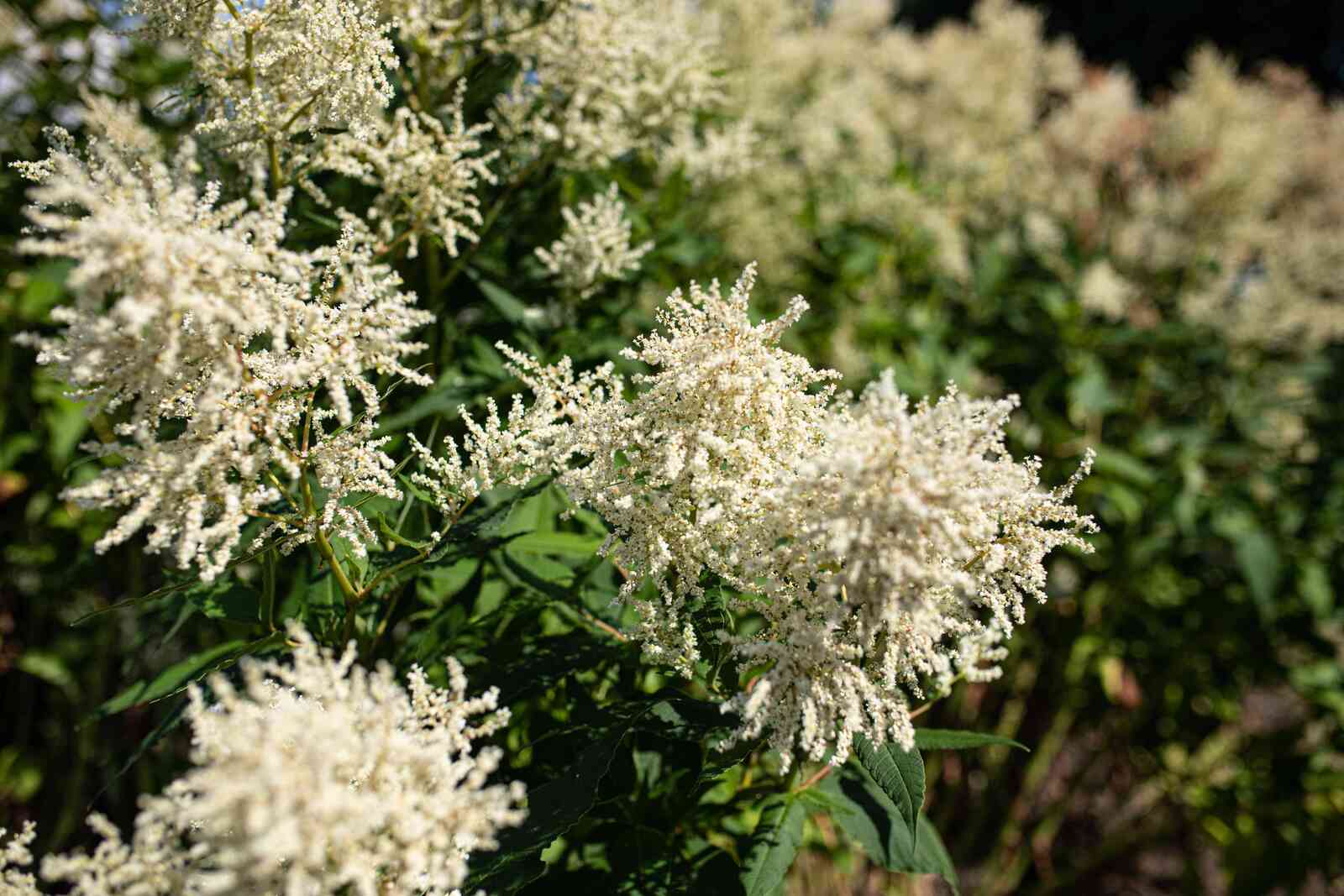
Known for its unique appearance and fascinating characteristics, the Goat’s Beard plant is a fascinating member of the plant kingdom. With its distinctive white feathery flowers and elongated leaves, the Goat’s Beard captures the attention of nature enthusiasts and gardeners alike. Beyond its aesthetic appeal, this plant boasts a multitude of enigmatic facts that make it a subject of intrigue and curiosity.
In this article, we will delve into 16 fascinating facts about the Goat’s Beard, exploring its origins, growth patterns, medicinal properties, and ecological significance. Whether you are a plant lover, a gardener, or simply someone interested in expanding their knowledge of the natural world, these facts will provide you with a deeper appreciation for this extraordinary plant. So, let’s embark on a journey of discovery and unravel the enigma that is the Goat’s Beard.
Key Takeaways:
- Goat’s Beard is a stunning, low-maintenance plant that adds elegance and height to gardens. It’s deer resistant, attracts pollinators, and has medicinal uses, making it a versatile and beneficial addition to any landscape.
- The feathery flowers of Goat’s Beard can be used in cut flower arrangements and its young shoots are edible. It also has environmental benefits, such as preventing soil erosion and contributing to biodiversity.
What is Goat’s Beard?
Goat’s Beard (Aruncus dioicus) is a perennial flowering plant that belongs to the Rosaceae family. It is known for its tall, feathery clusters of creamy white flowers that resemble a goat’s beard, hence the name.
Native Habitat
Goat’s Beard is native to North America and can be found growing in moist, wooded areas, along streams, and in mountainous regions. It thrives in cool, damp conditions.
Appearance
The plant can reach a height of up to six feet, with deeply divided, fern-like leaves. The flowers bloom in early to mid-summer and create an eye-catching display with their fluffy, plume-like appearance.
Cultivation
Goat’s Beard is a popular choice for gardeners due to its striking appearance. It can be grown in partial shade to full sun, as long as the soil is rich and well-drained.
Medicinal Uses
The roots and leaves of Goat’s Beard have been utilized in traditional medicine for their diuretic and anti-inflammatory properties. They are believed to help with urinary tract issues and reduce swelling.
Wildlife Attraction
The flowers of Goat’s Beard are rich in nectar and attract a variety of pollinators, including bees and butterflies. The plant also provides cover and nesting sites for birds.
Deer Resistant
Goat’s Beard is known to be resistant to deer browsing, making it a great choice for gardens located in areas with high deer populations.
Hardy Plant
Goat’s Beard is a hardy plant that can withstand cold temperatures and is resistant to many diseases and pests, making it relatively low-maintenance for gardeners.
Herbal Tea Infusion
The leaves of Goat’s Beard can be dried and used to make a herbal tea infusion, which is known for its mild, earthy flavor and potential health benefits.
Symbolic Meaning
In certain cultures, Goat’s Beard is associated with love, purity, and fertility, and is sometimes used in wedding bouquets and floral arrangements.
Versatile Plant
Goat’s Beard can be used in various gardening styles, from traditional cottage gardens to modern landscapes, adding texture and height to flower beds and borders.
Edible Shoots
The young shoots of Goat’s Beard can be harvested in the spring and used as an edible delicacy. They have a mild, slightly nutty flavor.
Companion Planting
Goat’s Beard can be used as a companion plant to attract beneficial insects and improve the overall health of a garden by increasing biodiversity.
Cut Flower Arrangements
The feathery flowers of Goat’s Beard make for stunning additions to cut flower arrangements, adding elegance and a touch of whimsy to any bouquet.
Environmental Benefits
Goat’s Beard helps stabilize soil and prevent erosion due to its extensive root system. It also contributes to the overall biodiversity of an ecosystem.
Mythical Beliefs
In some folklore, Goat’s Beard is associated with magical properties and believed to bring good luck and ward off evil spirits.
Goat’s Beard, with its elegant appearance and intriguing qualities, is truly a captivating addition to any garden. Whether you’re drawn to its symbolic meaning, desire a low-maintenance plant, or simply appreciate its beauty, Goat’s Beard is sure to leave a lasting impression.
Conclusion
In conclusion, Goat’s Beard is a fascinating and enigmatic plant that captivates our attention with its unique characteristics. From its impressive ability to adapt to various environments to its medicinal properties, Goat’s Beard continues to intrigue botanists and nature enthusiasts alike. Whether you are interested in its fluffy seed heads or its historical significance, there are plenty of reasons to appreciate this remarkable plant. So, next time you come across a Goat’s Beard, take a moment to marvel at its beauty and ponder the many secrets it holds.
FAQs
1. What is Goat’s Beard?
Goat’s Beard, scientifically known as Aruncus dioicus, is a perennial flowering plant that belongs to the Rosaceae family. It is characterized by its tall stature, feathery foliage, and fluffy white or cream-colored plumes of flowers.
2. Where can Goat’s Beard be found?
Goat’s Beard is native to North America, Europe, and Asia. It can be found in various habitats, including forests, meadows, and mountainous regions. It also thrives in moist and shady areas.
3. Does Goat’s Beard have any medicinal properties?
Yes, Goat’s Beard has been traditionally used for its medicinal properties. The plant contains tannins, which have astringent and anti-inflammatory effects. It has been used to treat ailments such as diarrhea, sore throat, and hemorrhoids.
4. Can Goat’s Beard be grown in gardens?
Absolutely! Goat’s Beard can be cultivated in garden settings. It prefers partial shade and well-drained soil. Its striking appearance and attractive plumes make it a popular choice for adding visual interest to gardens and landscapes.
5. What is the significance of the name “Goat’s Beard”?
The name “Goat’s Beard” is derived from the appearance of the plant’s seed heads, which resemble the beard of a goat. This unique characteristic of the plant has contributed to its distinctive name.
Goat's Beard enchants with its enigmatic nature and captivating beauty. This versatile plant offers a treasure trove of benefits, from medicinal uses to environmental advantages. Exploring the mysteries of Goat's Beard has likely piqued your curiosity about other fascinating plants. Delve into the astonishing world of Aruncus, where you'll uncover even more intriguing facts and insights. Each plant holds its own unique secrets, waiting to be discovered by those eager to appreciate the wonders of nature.
Was this page helpful?
Our commitment to delivering trustworthy and engaging content is at the heart of what we do. Each fact on our site is contributed by real users like you, bringing a wealth of diverse insights and information. To ensure the highest standards of accuracy and reliability, our dedicated editors meticulously review each submission. This process guarantees that the facts we share are not only fascinating but also credible. Trust in our commitment to quality and authenticity as you explore and learn with us.


